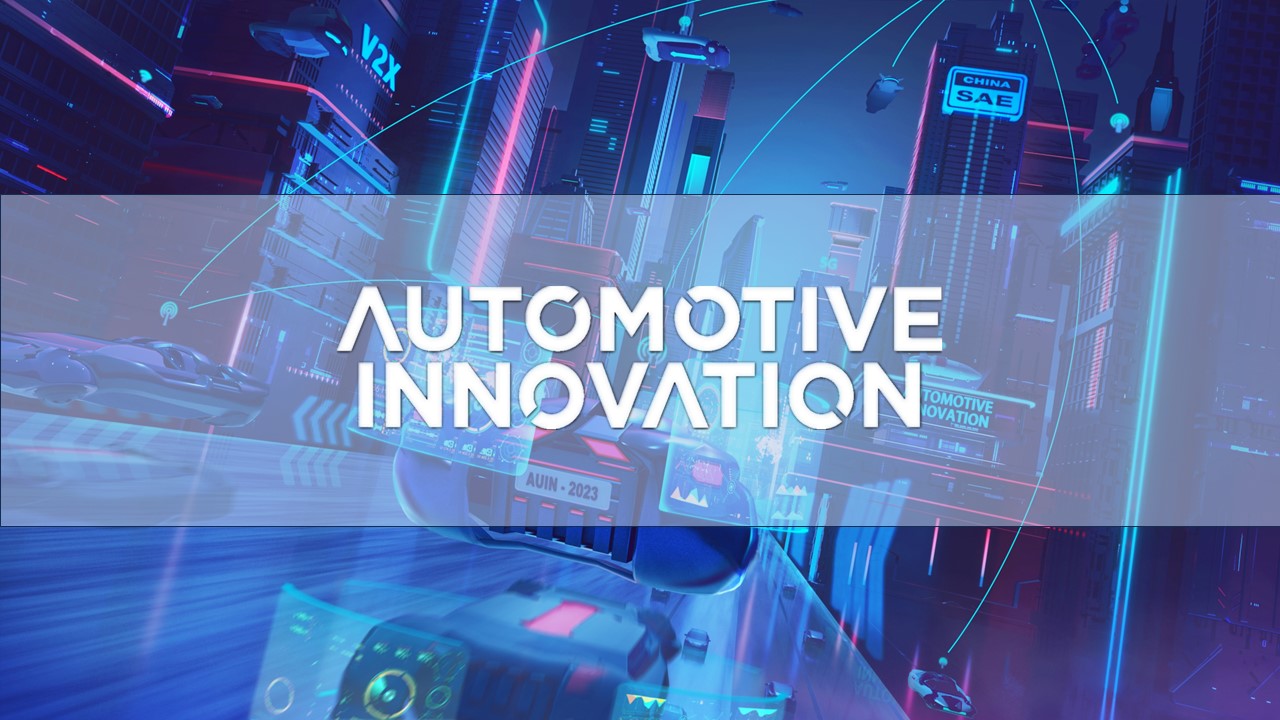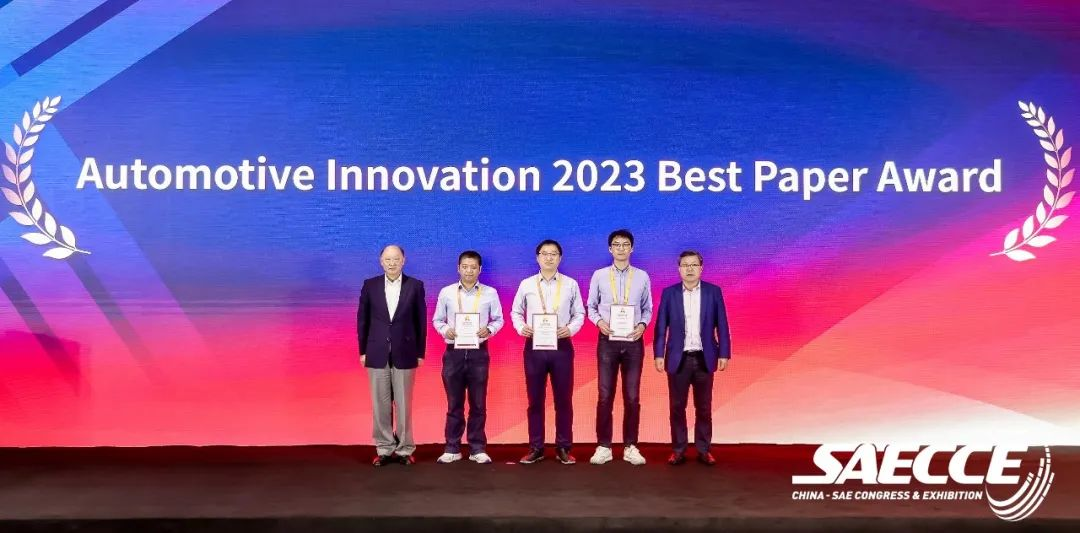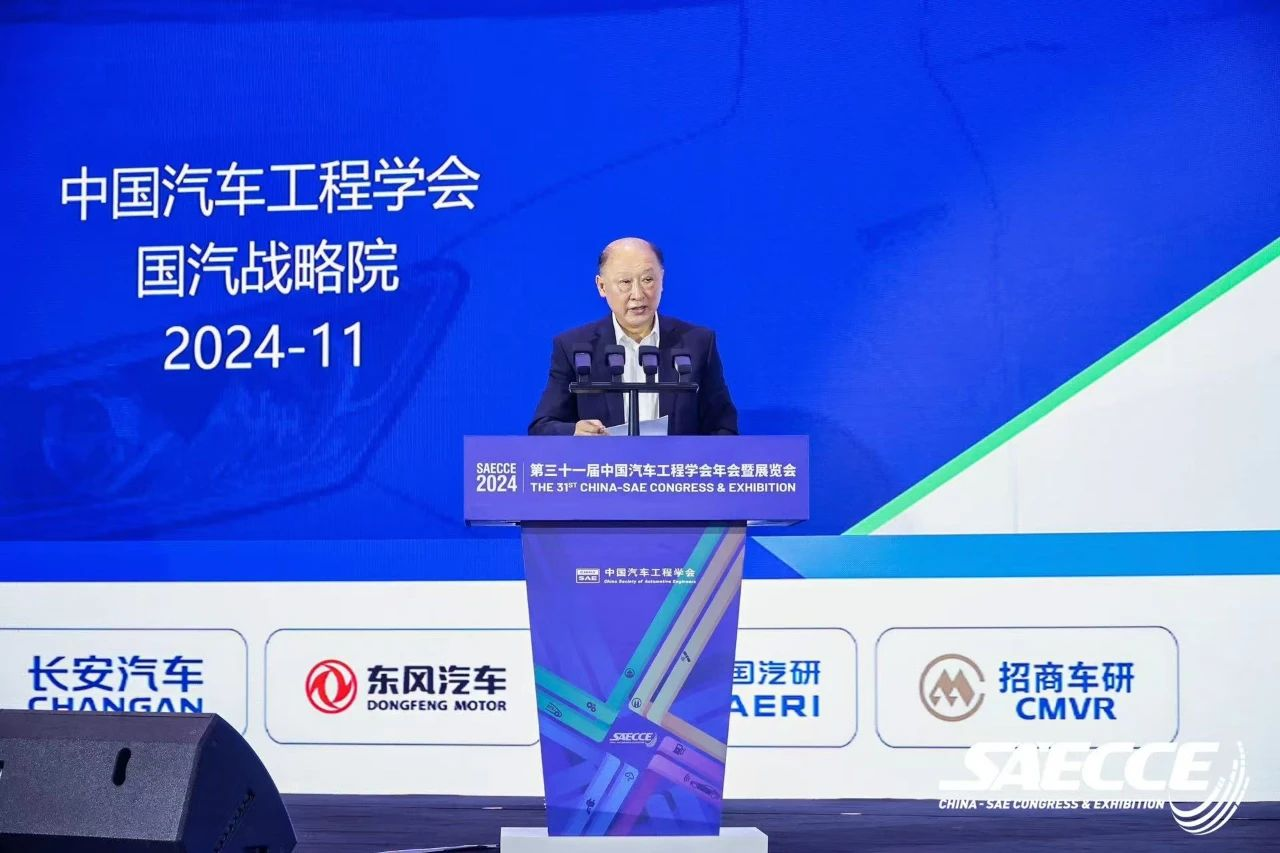

|
The journal Automotive Innovation is sponsored by China SAE, published through Springer Nature, distributed around the world, it reflects the top-level research and technological advance of automotive engineering.
Automotive Innovation newsletter in November includes the following contents: 1. Article Recommendation——Three papers on Autonomous Vehicles 2. China SAE News: · New Deadline Launched: For the Feature Topic on Intelligent Transportation Systems |

   
|
MFE-SSNet: Multi-Modal Fusion-Based End-to-End Steering Angle and Vehicle Speed Prediction Network
Yi Huang, Wenzhuo Liu, Yaoyu Li, Lei Yang, Hanqi Jiang, Zhiwei Li, Jun Li |
||
| In the field of autonomous vehicles, accurately predicting steering angle and speed is a pivotal task. This task affects the accuracy of the final decision of the autonomous vehicle and is the basis for ensuring the safe and efficient operation of the autonomous vehicle. Previous studies have often relied on data from only one or two modalities to make predictions for steering angle and vehicle speed, which were often inadequate. In this paper, the authors propose a Multi-Modal Fusion-Based End-to-End Steering Angle and Vehicle Speed Prediction Network (MFE-SSNet). The network innovatively extends the one-stream and two-stream structure to a three-stream structure and cleverly extracts features of images, steering angles, and vehicle speeds using HRNet and LSTM layers. In addition, in order to fully fuse the feature information of different modal data, this paper also proposes a local attention-based feature fusion module. This module improves the fusion of different modal feature vectors by capturing the interdependencies in the local channels. Experimental results demonstrate that MFE-SSNet outperforms the current state-of-the-art model on the publicly available Udacity dataset. | |||
|
Keywords: Autonomous vehicles, Deep learning, Multimodal fusion, Intelligent transportation
Huang, Y., Liu, W., Li, Y. et al.: MFE-SSNet: Multi-Modal Fusion-Based End-to-End Steering Angle and Vehicle Speed Prediction Network. Automot. Innov. (2024). https://doi.org/10.1007/s42154-024-00296-x |
|||
| Full Paper Reading>> | |||
   
|
A Model Predictive Backstepping Control Approach for Angle Tracking of Steer-by-Wire System Lin He, Ziang Xu, Chaolu Guo, Chunrong Huang, Xinxin Zheng, Qin Shi |
||
| This paper presents a hybrid control approach, termed Model Predictive Backstepping Control, for steering angle manipulation. The design of stepping manifolds in the backstepping control incorporates the Lyapunov function, posing a challenge in determining optimal stepping parameters for each manifold. In contrast to the predominant focus on constant stepping coefficients in existing research, this study explores the less investigated variable approach. Stepping parameters are introduced as tunable variables and incorporated into a backstepping control law, computed using model predictive control with the backstepping control law using tunable variables as the system input. The hybrid control algorithm utilizes prior knowledge of the control system to identify optimal values for the stepping parameters. The paper comprehensively explores model predictive backstepping control applied to a steer-by-wire system, specifically addressing the resolution of variable stepping parameters through a cost function. The developed algorithm is implemented into a steering control unit and subsequently validated in a real-world steering test vehicle. The results demonstrate successful realization of angle following in the steer-by-wire system within an engineering practice context. | |||
|
Keywords: Hybrid control algorithm, Lyapunov function, Stepping manifold, Variable stepping parameter, Steering test vehicle
He, L., Xu, Z., Guo, C. et al.: A Model Predictive Backstepping Control Approach for Angle Tracking of Steer-by-Wire System. Automot. Innov. (2024). https://doi.org/10.1007/s42154-024-00291-2 |
|||
| Full Paper Reading>> | |||
   
|
Research on Dual-Clutch Intelligent Vehicle Infrastructure Cooperative Control Based on System Delay Prediction of Two-Lane Highway On-Ramp Merging Area
Yangyang Wang, Tianyi Wang |
||
| The highway on-ramp merging area is a common bottleneck prone to traffic congestion and accidents. With the current trajectory and advancements in automotive technology, intelligent vehicle infrastructure cooperative control based on connected and automated vehicles (CAVs) is a fundamental solution to this problem. While much existing research focuses solely on ramp merging control in single-lane highway scenarios, there is more than one main lane in the actual highway environment. Thus, this paper proposes a dual-clutch longitudinal-lateral cooperative planning model, inspired by the principle of dual-clutch transmission, to address this gap. Besides, considering the impact of communication delay on control effects within the internet of vehicles, the paper proposes a system delay prediction model, which integrates the adaptive Kalman filter algorithm, the elitist non-dominated sorting genetic algorithm based on imitation learning, and the radial basis function neural network. The delay predicted dual-clutch on-ramp merging control model (DPDM) applied to two-lane highways for CAVs makes up of these two models above. Then, the performance of the DPDM is analyzed under different traffic densities on two-lane highways through simulation. The findings underscore the DPDM's pronounced comprehensive advantages in enhancing group vehicle safety, expediting and stabilizing merging processes, optimizing traffic flow speed, and economizing fuel consumption. | |||
|
Keywords: Dual-clutch cooperative planning, On-ramp merging control, System delay prediction, Connected and automated vehicle, Multi-objective optimization, Radial basis function neural network Wang, Y., Wang, T.: Research on Dual-Clutch Intelligent Vehicle Infrastructure Cooperative Control Based on System Delay Prediction of Two-Lane Highway On-Ramp Merging Area. Automot. Innov. (2024). https://doi.org/10.1007/s42154-024-00283-2 |
|||
| Full Paper Reading>> | |||

| New Deadline Launched: For the Feature Topic on Intelligent Transportation Systems | |||
 Automotive Innovation is calling for papers for the Feature Topic on Intelligent Transportation Systems. Welcome topics include, but are not strictly limited to, the following:
For more detailed information please click here. |
|||
| Automotive Innovation 2023 Best Paper Award Announced | |||
 To enhance the dissemination of outstanding research achievements and recognize exceptional paper authors, the China SAE Academic Journals Department has organized the Automotive Innovation 2023 Best Paper Award. After comprehensive consideration of topic importance, content innovation, research scientificity, application potential, article readability, and download/citation metrics, a panel of experts selected three top papers from the 2023 issues of Automotive Innovation. The winners include:
|
|||
| The Top Ten Automotive Technology Trends for 2025 has been Release | |||
 On November 12, Li Jun, Honorary Chairman of the China Society of Automotive Engineers (SAE-China), Academician of the Chinese Academy of Engineering, and Professor at Tsinghua University, officially released the "Top Ten Automotive Technology Trends for 2025" on behalf of SAE-China. The trends focus on the "5 technology clusters + 26 special topics" outlined in the "New Energy Vehicle Technology Roadmap 3.0," highlighting technologies expected to achieve significant breakthroughs, new mass production, and increased application scales in the coming year. Four rounds of industry-wide surveys and research involved 405 CTOs, experts, scholars, and technical leaders from 113 organizations, culminating in a consensus-based annual technology trend report. For more detailed information please click here . |
|||

|
Automotive Innovation Sponsored by China SAE and published globally via Springer Nature, Automotive Innovation aims to be a world-class journal that provides abundant sources of innovative findings for automotive engineers and scientists. The journal is published quarterly, ensuring high-quality papers satisfying international standards. With the editorial board consisting of world-renowned experts, it has attracted readers from 72 countries and regions. The highest download of a single article wins more than 64,000. The journal is indexed in Ei Compendex, ESCI, and Scopus (IF2023=4.8; CiteScore2023=8.5). The journal provides a forum for the research of principles, methodologies, designs, theoretical background, and cutting-edge technologies in connection with the development of vehicle and mobility. The main topics cover: energy-saving, electrification, intelligent and connected, safety, and emerging vehicle technologies. Editors-in-Chief Jun Li, Academician of CAE, Honorary President of China SAE, Professor of Tsinghua University Frank Zhao, Honorary Lifetime President of FISITA, Director of Tsinghua Automotive Strategy Research Institute, Professor of Tsinghua University Executive Associate Editor-in-Chief Prof. Xinjie Zhang, Professor of Jilin University |
||
|
Paper submission and browse www.ChinaSAEJournal.com.cn www.springer.com/42154 Contacts: Ms. Dong Li Tel: +86-10 5092-3792 Email: lidong@sae-china.org 
|

|
|
|
Sponsored by |
Published by
|
|